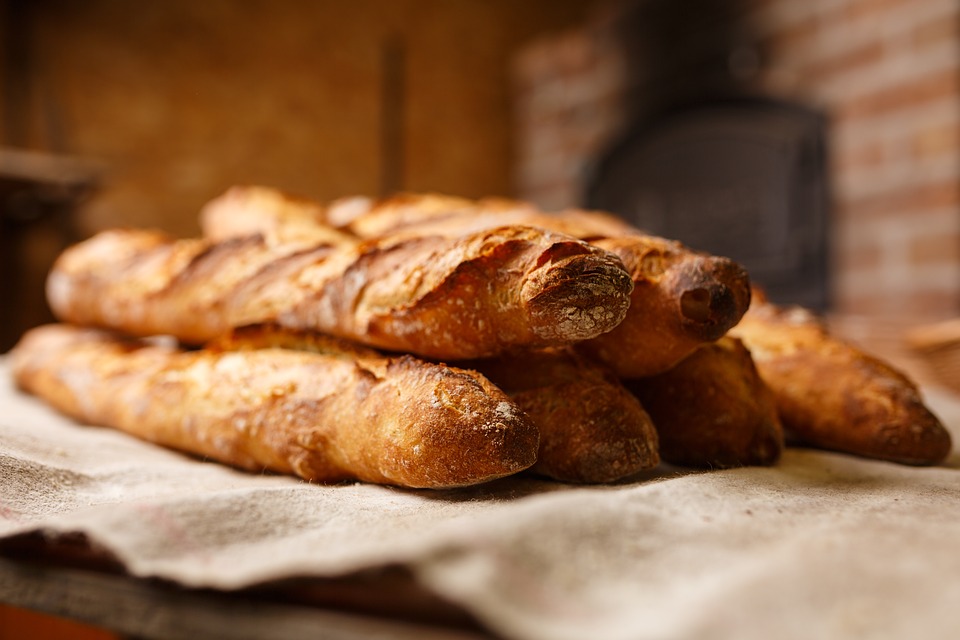
3 Lesser Known Must-Try French Dishes
Move on from the ratatouille and boeuf bourgignon and impress your friends with your connaissance of French cuisine.
France’s influence on the world’s culinary industry can not be overlooked. However, there are some dishes that we think were created so perfectly, they don’t need the latest fusion to keep them relevant. While some may seem “strange” by American standards, these dishes are not only worth trying, they are a must for anyone wishing to immerse themselves in the French way of life!
ESCARGOTS A LA BOURGUIGNONNE
This dish is also known in English as herb buttered snails and no one can visit France without trying these. Snails tend to be associated with the French cuisine, and for good reason as they are a staple food of French families during the holidays.
2. STEAK TARTARE
This dish is essentially uncooked beef, that is ground up and blended with other ingredients. It may seem unappetizing or unhealthy, keep in mind that it has evolved a good bit from when the French made it with horse meat. Restaurants that serve this dish are very careful to ensure their meat is safe. and ready for any daring customer to enjoy.
3. FROG LEGS
Photo: Ruocaled
These became a French delicacy after the monks who were banned from eating meat had these qualified as fish. The peasants followed their example and ever since France has been the epicenter of frog leg cuisine. Though it may seem a bit bizarre, locals state the taste and texture are comparable to chicken, so even if you’re weary, you may still be in for a treat.
We hope you’ve enjoyed learning about 3 Lesser Known Must-Try French Dishes! Ready to immerse yourself in all of the wonderful culinary creations France has to offer in their native land? Our culturally immersive group classes and native instructors can put you on the path to fluency faster than you might think! Click below to learn more.
What's In A Label?
In France, it may mean the difference between soy “milk” and soy “beverage."
The Académie française is, without a doubt, the authority in the protection of the French language. If you’ve read our article Au Rivoir Smartphones, you can see the depths to which the committee is willing to go to make sure that the language is preserved.
According to a report by The Independent, French MPs have voted to prohibit the use of language used to describe meat, including the English words "sausage" and "burger," for anything that isn't actually meat. This mirrors an incident in the U.S. where Hellman's & Best Foods wanted to crack down on companies like Hampton Creek and Unilever by asserting that, by law, if a product calls itself mayo, it must have eggs. As one may expect, they were unsuccessful in instituting this linguistic regulation, and have developed their own lines of egg-less mayo.
While good intentioned, this entire cause may be a total French faux pas. While it’s obvious that the origins of the baguette and champagne are obviously and unapologetically French, the origin of the burger may not be so cut and dry. According to Wikipedia, “The exact origin of the hamburger may never be known with any certainty. Most historians believe that it was invented by a cook who placed a Hamburg steak between two slices of bread in a small town in Texas, and others credit the founder of White Castle for developing the "Hamburger Sandwich."
This proposal, however, would not only extend to meat, but also to soy & tofu products marketed as “milk” or “butter”. Wendy Higgins, of Humane Society International, said: "It’s a shame that instead of embracing vegan and vegetarian food, France has adopted a position of defensive paranoia. But ultimately it won’t stop the rise of compassionate eating because the delicious, nutritious, Earth-friendly and ethical benefits will prevail regardless of what you call the products.”
We hope you've enjoyed learning about What's In A Label! Do you think this move by the Académie française is an effective measure or a waste of time? Join the conversation below!
Going for the Gelato Gold
Where’s the best Italian ice cream? France, apparently.
France has been crowned the champion of the 2018 Gelato World Cup for the 4th time in the Italian city of Rimini.
France beat 11 other countries for the title with Spain taking second and Australia taking third place. Unfortunately, representatives from the land of gelato, Italy, were unable to attend this year due to the Gelato World Cup rules that bar the title holders from participating in the following edition of the tournament, however that rule has been removed for 2020 thus allowing France and Italy to battle it out for the title for the first time.
Each team was tasked with daily gelato challenges, with trials including: ice sculpture, a decorated gelato pan, gelato cake, an entrée competition of three hot finger foods combined with gourmet gelato and gelato snacks.
All of the entries are available on the official Instagram of the Gelato World Cup by clicking below:
Held at the four-day SIGEP international trade show for all things sweet and savory (ice cream, pastry, bakery and coffee), Argentina, Brazil, South Korea, Morocco, Poland, Switzerland, Ukraine and the United States also tested their scooping skills. Italian culture minister Dario Franceschini participated in the event and announced that, following Neapolitan pizza being added to United Nations' cultural body Unesco's intangible heritage list (as mentioned in our previous article: Battle of the Baguette), that he would push for ice cream's inclusion.
We hope you have enjoyed Going for the Gelato Gold! Which is your favorite of the gelato creations revealed at the Gelato World Cup? Leave a comment below!
Battle of the Baguette
"Excellence and expertise must be preserved, and that is why it should be heritage-listed," President Macron stated in an interview with French radio as French artisans have voiced concern about mass-produced, low quality imitations of the beloved French bread. "A baguette is the symbol of France, like the Eiffel Tower,"
Battle of the Baguette
The French president Emmanuel Macron has stated recently that the baguette should be listed as a Unesco cultural treasure. In a statement in support of a national bakers’ association, he affirmed that:
"The baguette is the envy of the whole world.”
"Excellence and expertise must be preserved, and that is why it should be heritage-listed,"
Inspired by the success of Italy's Naples pizza, which was protected by the UN's cultural body last year after an intense lobbying campaign (including a petition signed by more than two million Italians), Macron hopes to add baguettes to the coveted list that aims to save traditions from.
The bakers say it is not just the name and shape, but the recipe and ingredients that need to be protected.
"Excellence and expertise must be preserved, and that is why it should be heritage-listed," President Macron stated in an interview with French radio as French artisans have voiced concern about mass-produced, low quality imitations. "A baguette is the symbol of France, like the Eiffel Tower," said Dominique Anract, the president of the national confederation of baking and pastry.
"When I see the the growing dominance of French supermarkets and convenience stores in the sale of bread, I say to myself that we must act.”
The traditional baguette is already protected in France by a 1993 law that instructs that the bread must only be made from wheat flour, water, yeast and salt and can not be frozen or contain added preservatives.
We hope you've enjoyed learning about the Battle of the Baguette! Do you think the legendary bread has earned it's place among the list of Unesco cultural treasures? Leave a comment below and tell us why!
How to Sip High Tea Like the French
It’s not only for the Brits! Read and learn how the French handle tea time.
I know what you must be thinking...high tea is a British thing, so why are we talking about French? The idea of afternoon tea may have become popular because of the UK, but the rest of the world has taken high tea to their own tables and have created subcultures within. France is no stranger to this 'afternoon amongst friends' ritual, so I've included some of the delightful things you might find at a French spread. Grab a napkin and enjoy How to Sip High Tea Like the French. You might find yourself drooling by the time you finish. À votre santé!
If you have ever sat down for a high tea, then you will know that hours will quickly pass before you while little trinkets, tea and snacks find themselves at your finger tips. In France this equates to such delicacies as an 'olympe' pictured below (a macaron biscuit with candied violet, strawberry and raspberry sweet jelly, violet cream and fresh raspberries). Or classic sugar-powdered Madeleines, crunchy Palmier, or soft and sweet Cannelé. Miam Miam!
Image: pastryapprentice.wordpress.com
Image: lingalog.net
Image: marthastewart.com
Image: oasisdeslones.canalblog.com
Whichever pastry finds its way to your mouth, this delightful sit-down is usually for more than just your sense of taste, it's also one for your eyes! In France, this would mean enjoying places such as The Bar Vendôme, Ritz Paris (now opened after a 2-year renovation), the world famous Angelina (known for the best chocolat chaud in Paris), or the Hôtel Daniel (featuring the highly celebrated pastry chef Sébastien Gaudard). But amongst all of these, possibly the most impressive spot for Serious tea drinkers is Mariage Frères. This shop dates back to 1854 and has a serious take on tea. With classic tea rooms, they are located at 30 rue du Bourg-Tibourg and 17 place de la Madeleine. Make sure to order your cup of tea en Français when you visit: 'Je prendrai un thé noir, s'il vous plaît.' (May I please have a black tea?) and try asking for your seat with 'Est-ce que nous pourrions avoir une table pour 2, s'il vous plaît?' (May I please have a table for two?)
Image: hipshops.com
Of course, learning How to Sip High Tea Like the French would be nothing without a few glasses of French humor. However, for most Americans, French humor is often misunderstood. To shed some light on the topic, I've included a few pointers below to help guide you.
Generally, French humor is oriented towards others rather than towards the speaker. This is less nonsensical than English humor and perceived as more cruel. It is never self-deprecating, rather it is combative, fueled by ridicule and mockery and it needs a target. The French are great at teasing, which contribute (for naive foreigners) to their reputation of being rude.
The French love jokes about sex and bodily functions, which your will often hear in the most unexpected (for Americans) contexts. This would include situations such as a dinner table with well-educated people.
A frequent form of humor is to exaggerate excessively in order to illustrate something's falsehood. Being too literal comes off as plain silly for the French.
Puns are a very big part of French jokes, primarily because language is so important to their culture. Often jokes are not translatable or hard to follow unless you speak French very well. (french humor points inspired by understandfrance.org)
Whether it be the delicious pastries, the wonderful cafe environments or the conversation, the French have developed their own place in the world of high tea. Next time you take the afternoon to enjoy with friends, try it all with a French twist! Have a favorite spot your recommend for high tea in France? Don't forget to post your comments or tips below.

















